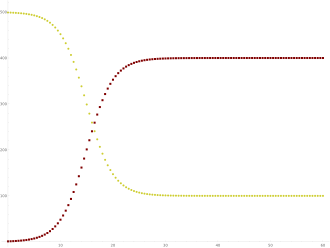The worldwide epidemic of COVID-19 has taken place over 8 months now, and the number of cases has yet to grow. Policies made to resist viral infection around the world are largely based on mathematical modeling of viral infections. Then, what is the universal mathematical modeling used to measure and prevent the further major spread of infectious diseases?
Firstly, there is a SIR model. SIR model was developed in 1927 by Kermack and McKendrick. It’s the most common and simple model used to explain the epidemic. It is applied to a theoretical disease that has no incubation period and assumes that after the recovery our body would be immune to a certain disease. A good example of these kinds of disease is measles and rubella.
 ▲ SIR Model
▲ SIR ModelSIR model is able to predict virus infections pretty accurately but doesn’t take variable numbers such as incubation period and recovered patients who haven’t built up the immune system after being infected by a certain disease. Therefore, a variety of battements of SIR models are shown. SEIR model and SEIRS model are both a good example of improvements in a SIR model. In an SEIR model, it takes consideration of variable numbers of uninfected, infected people as well as fully recovered patients of a disease that has an incubation period. SEIRS, the more improved version of the SEIR model is similar to its former counterpar, but can be applied to diseases which could be infectious again after a certain period after the epidemic breakout.
Thanks to the developments of these models, it became more
easier to make new policies to resist viral epidemics based on accurate
mathematical and scientific evidence.
By Minsu Chung
다른 곳에 퍼가실 때는 아래 고유 링크 주소를 출처로 사용해주세요.


학성중 3학년